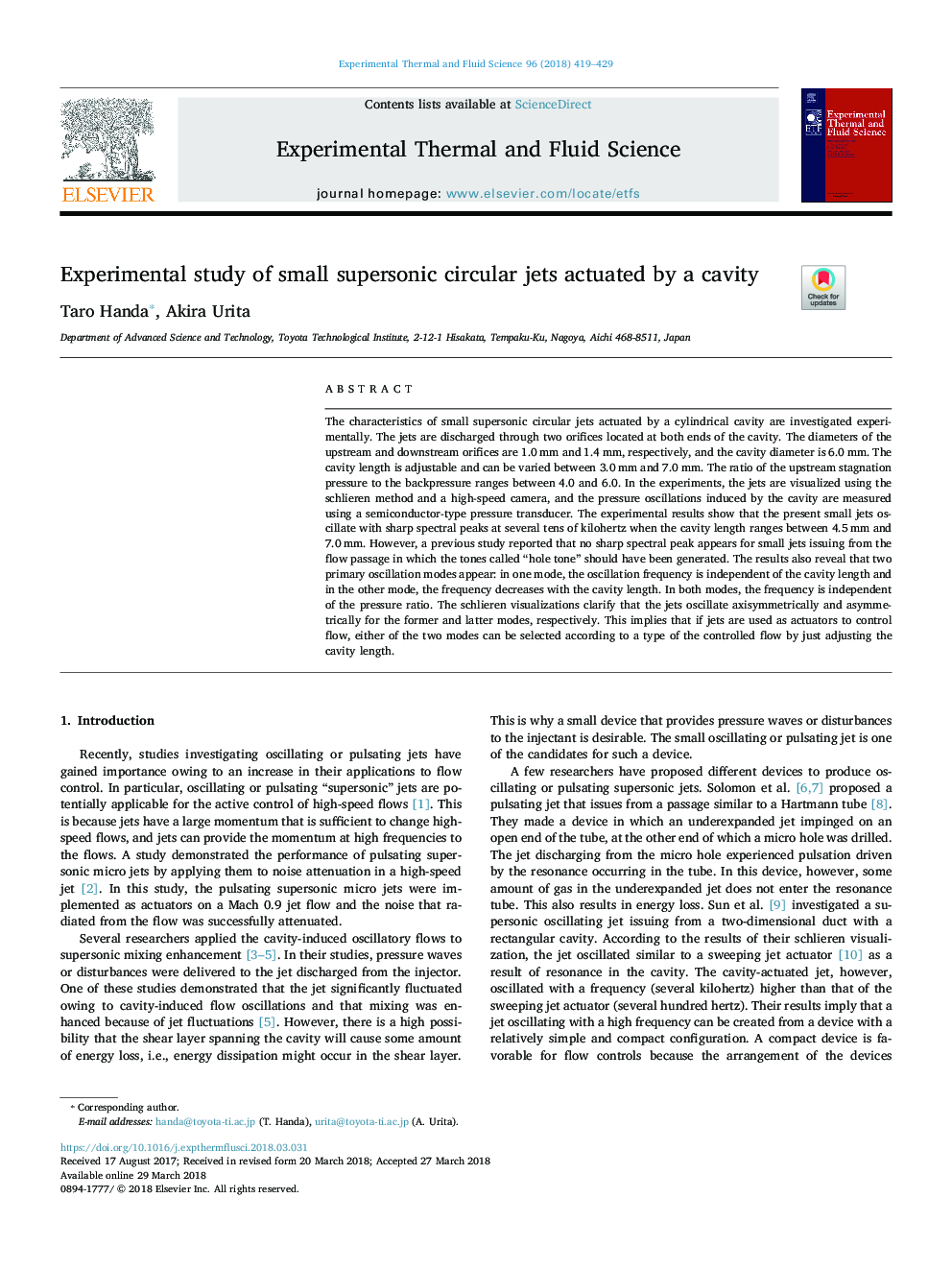| کد مقاله | کد نشریه | سال انتشار | مقاله انگلیسی | نسخه تمام متن |
|---|---|---|---|---|
| 7051721 | 1457380 | 2018 | 11 صفحه PDF | دانلود رایگان |
عنوان انگلیسی مقاله ISI
Experimental study of small supersonic circular jets actuated by a cavity
ترجمه فارسی عنوان
مطالعه تجربی جت های کوچک دایره ای با ساختار مغناطیسی که توسط یک حفره عمل می کنند
دانلود مقاله + سفارش ترجمه
دانلود مقاله ISI انگلیسی
رایگان برای ایرانیان
موضوعات مرتبط
مهندسی و علوم پایه
مهندسی شیمی
جریان سیال و فرایندهای انتقال
چکیده انگلیسی
The characteristics of small supersonic circular jets actuated by a cylindrical cavity are investigated experimentally. The jets are discharged through two orifices located at both ends of the cavity. The diameters of the upstream and downstream orifices are 1.0â¯mm and 1.4â¯mm, respectively, and the cavity diameter is 6.0â¯mm. The cavity length is adjustable and can be varied between 3.0â¯mm and 7.0â¯mm. The ratio of the upstream stagnation pressure to the backpressure ranges between 4.0 and 6.0. In the experiments, the jets are visualized using the schlieren method and a high-speed camera, and the pressure oscillations induced by the cavity are measured using a semiconductor-type pressure transducer. The experimental results show that the present small jets oscillate with sharp spectral peaks at several tens of kilohertz when the cavity length ranges between 4.5â¯mm and 7.0â¯mm. However, a previous study reported that no sharp spectral peak appears for small jets issuing from the flow passage in which the tones called “hole tone” should have been generated. The results also reveal that two primary oscillation modes appear: in one mode, the oscillation frequency is independent of the cavity length and in the other mode, the frequency decreases with the cavity length. In both modes, the frequency is independent of the pressure ratio. The schlieren visualizations clarify that the jets oscillate axisymmetrically and asymmetrically for the former and latter modes, respectively. This implies that if jets are used as actuators to control flow, either of the two modes can be selected according to a type of the controlled flow by just adjusting the cavity length.
ناشر
Database: Elsevier - ScienceDirect (ساینس دایرکت)
Journal: Experimental Thermal and Fluid Science - Volume 96, September 2018, Pages 419-429
Journal: Experimental Thermal and Fluid Science - Volume 96, September 2018, Pages 419-429
نویسندگان
Taro Handa, Akira Urita,
